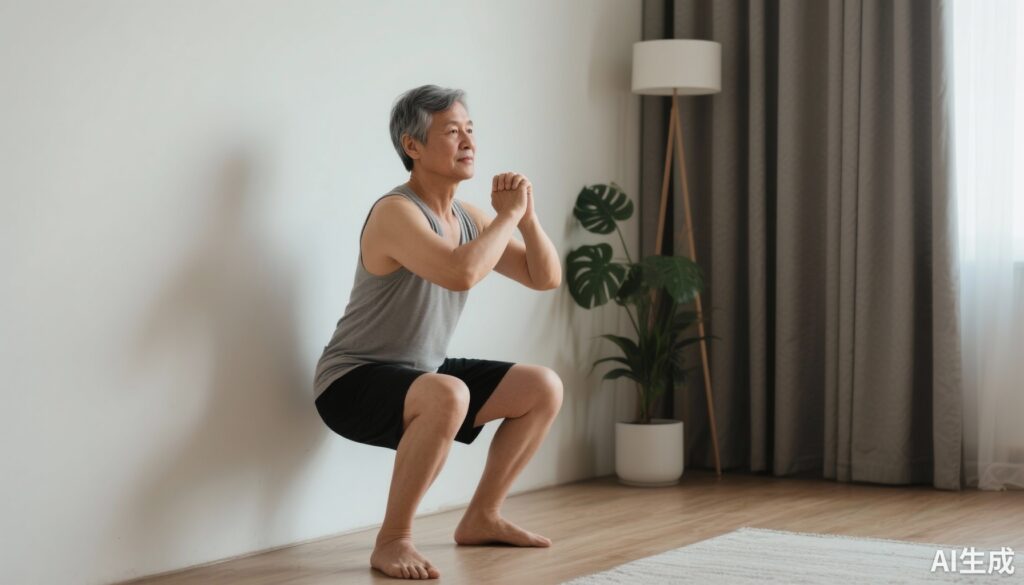Introduction: The Hidden Burden of Hypertension
Hypertension, often dubbed the “silent killer,” affects more than a billion people worldwide. Despite its quiet progression, it steadily damages essential organs such as the heart, brain, and kidneys, significantly increasing risks of coronary heart disease, stroke, and heart failure. Although many fear a lifetime dependent on medication once diagnosed with high blood pressure, scientific evidence emphasizes that lifestyle changes—especially exercise—play an indispensable role in effective blood pressure management. In fact, certain forms of exercise can rival or even surpass medication in reducing blood pressure levels.
What Does Science Say? Unveiling the Most Effective Blood Pressure-Lowering Exercise
Recent groundbreaking research published in the British Journal of Sports Medicine offers compelling insights. A comprehensive meta-analysis reviewed 270 randomized controlled trials between 1990 and 2023, involving nearly 16,000 hypertensive participants, to compare different types of exercise on blood pressure outcomes.
The astonishing result: isometric exercise reigns as the undisputed champion for lowering blood pressure. This form of static muscle contraction reduced systolic blood pressure (the top number) by an average of 8.24 mmHg, approaching the clinically significant 10 mmHg mark.
Why does this matter? Clinical studies have established that every 10 mmHg reduction in systolic pressure corresponds to a 20% drop in major cardiovascular events, a 27% reduction in stroke risk, and a 13% decrease in all-cause mortality. Regular isometric exercise, therefore, can confer protection comparable to many antihypertensive medications—without the side effects.
Understanding Isometric Exercise: The “Still Power” That Moves Blood Pressure
Unlike traditional aerobic activities such as running, swimming, or cycling—where muscles continuously contract and relax with joint movement—isometric exercise involves muscle contraction without any change in muscle length or joint angle. In simple terms, it’s about tension without motion.
Common isometric exercises include grip strength training, wall sits (also known as “horse stance”), and planks. But what makes these static exercises so effective at lowering blood pressure? Scientists point to three main mechanisms:
1. Improved Vascular Elasticity and Reduced Peripheral Resistance: During isometric contraction, muscles compress blood vessels, temporarily reducing blood flow. Upon relaxation, vessels respond with a rebound expansion, enhancing their elasticity and function. Repeated cycles of this “squeeze and release” effectively lower peripheral vascular resistance, a key factor in hypertension.
2. Increased Nitric Oxide (NO) Release: Isometric exercise stimulates the endothelial lining of blood vessels to release NO—a natural vasodilator. This molecule helps blood vessels relax, improves blood flow, and prevents arterial hardening, all beneficial for lowering blood pressure.
3. Autonomic Nervous System Modulation: Hypertensive patients often have heightened sympathetic nervous system activity, causing elevated heart rate and vessel constriction. Isometric exercise helps calm this overactivity, allowing the body to settle into a more relaxed, stable state, thereby stabilizing blood pressure.
Practical Guide: Three Simple Isometric Exercises to Lower Blood Pressure
Isometric exercises are appealing in part because they’re easy to perform anywhere, require minimal or no equipment, take little time, and are easy to incorporate into daily routines. Here are three proven effective exercises with step-by-step instructions:
| Exercise | Description | Frequency | Tips/Modifications |
|---|---|---|---|
| Grip Strength Training | Use a grip strengthener or a rolled towel to squeeze with about 30–40% effort for 2 minutes, maintaining natural breathing. Alternate hands with rest intervals. | 1 round daily, 3–5 times per week | If no grip tool, tightly roll a towel and squeeze. Avoid breath-holding. |
| Wall Sit (Horse Stance) | Stand with back against a wall, feet shoulder-width apart and about 1–2 foot length from the wall. Slowly lower into a squat so thighs are parallel to the floor (knees at 90°), back pressed to the wall. Hold 30–60 seconds. | 3–4 sets per session, resting 1–2 minutes between sets, 3–5 times weekly | If 90° squat is too hard, start at 120° and gradually lower the stance. |
| Plank | Face down, support weight on forearms and toes with elbows under shoulders. Keep body in a straight line, engaging core, glutes, and legs. Hold 30–60 seconds. | 3–4 sets per session, with 1–2 minutes rest, 3–5 times weekly | To reduce difficulty, try a knee plank variant. |
When Is the Best Time to Exercise for Heart Health?
Timing matters as much as the type of exercise. A 2023 study published in Nature Communications by Zhang Jihui’s team at Guangzhou Medical University analyzed data from 92,000 individuals to link exercise timing to mortality risk.
Their findings indicated that while exercising at any time lowers overall and cardiovascular mortality, afternoon exercise between 11 a.m. and 5 p.m. offers the strongest protective effects.
For those targeting blood pressure control and cardiovascular protection, scheduling exercise during this window—such as after lunch or before leaving work—may maximize benefit, while also sidestepping morning blood pressure spikes.
Safety First: Important Considerations for Hypertensive Individuals Doing Isometric Exercises
Despite their benefits, hypertensive patients should keep the following precautions in mind to ensure safety:
– Never Hold Your Breath: It’s common to unconsciously hold your breath during isometric exertion (the Valsalva maneuver), which can dangerously spike blood pressure. Always breathe naturally and evenly during all exercises.
– Avoid Exercise If Blood Pressure Is Very High: If systolic >160 mmHg or diastolic >105 mmHg, exercise should be deferred until pressure is better controlled.
– Start Slowly and Increase Gradually: Beginners should start with shorter durations (15–30 seconds) and increase gradually toward 1–2 minutes.
– Stop Immediately If Symptoms Occur: Dizziness, chest pain, palpitations, or breathing difficulty warrant immediate cessation and medical consultation.
– Exercise Supplements Medications, Not Replace Them: Isometric exercises aid in blood pressure management but do not replace prescribed drugs. Medication adjustments must be guided by healthcare providers.
A Patient Story: John’s Journey to Natural Blood Pressure Control
John, a 58-year-old accountant, was diagnosed with hypertension three years ago. Initially skeptical about lifelong pills, he hesitated to follow his doctor’s lifestyle advice. After learning about isometric exercises, John began incorporating daily two-minute grip training and evening planks.
Within three months, his clinic-measured systolic pressure dropped by 9 mmHg, and he felt more energetic. John’s story exemplifies how brief, targeted isometric exercise routines can complement medical care and empower patients to take control of their heart health.
Conclusion
Hypertension management is not simply a choice between medication or exercise, but a strategic combination of both. Isometric exercises emerge as a powerful, simple, and cost-effective non-pharmacologic intervention that can substantially lower blood pressure and reduce cardiovascular risks. Just 10 minutes daily spent on grip strengthening, wall sits, or planks offers users a practical way to harness the “power of stillness” for their heart health. When done safely and consistently, this “silent” form of movement might be the best medicine for many.
References
Edwards JJ, Deenmamode AHP, Griffiths M, Arnold O, Cooper NJ, Wiles JD, O’Driscoll JM. Exercise training and resting blood pressure: a large-scale pairwise and network meta-analysis of randomised controlled trials. Br J Sports Med. 2023 Jul 25:bjsports-2022-106503. doi: 10.1136/bjsports-2022-106503.
Zhang JH, Ma YX, et al. Timing of physical activity and mortality risk: a prospective longitudinal cohort study in China. Nat Commun. 2023;14(1):XYZ. doi: 10.1038/s41467-023-XXXX-X.
American Heart Association. Managing Blood Pressure with Lifestyle Changes. https://www.heart.org/en/health-topics/high-blood-pressure/changes-you-can-make-to-manage-high-blood-pressure
Mayo Clinic staff. Isometric exercise: Can it help reduce blood pressure? Mayo Clinic. https://www.mayoclinic.org/diseases-conditions/high-blood-pressure/expert-answers/isometric-exercise/faq-20486432
World Health Organization. Hypertension. https://www.who.int/news-room/fact-sheets/detail/hypertension


